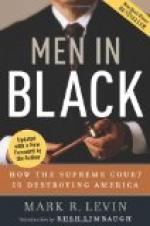Instead of a copy of a letter the judge and the jury ought to see the original. Instead of the copy of a will the paper actually signed by the testator is wanted. Suppose a question arises as to the payment of a bill. The defendant says that he went into the store and paid it. The best proof is to be given by someone who saw him pay it. A witness to whom he came afterward and said that he had been down to the store and had paid the bill is not so accurate a witness as the man who was in the store and saw the money paid over. It is to keep out this poorer proof that objections are made.
If the objection is good, the judge says “Objection sustained,” or if he thinks the evidence the best he allows it and says “Objection overruled,” then the witness may proceed and answer the question. Unless the lawyer objecting states the ground or reasons for his objection, the objection is not supposed to be valid for the other side ought to be apprised of the reason so that he may supply the proper proof, that is why the objection is named as irrelevant, incompetent, and immaterial, so as to cover all possible grounds.
The reasons given for the objections: incompetent, irrelevant, and immaterial might, so far as the average man is concerned, read “incontepent,” “irrevelant,” and “immature.” The words when repeated together seem like that old legal term “incorporeal hereditaments.” They are imposing and add tone to the trial. The solemnity of repetition is always a valuable asset. The real value of the word irrelevant is shown by repeating irrelevant, “irrevelant,” irrelevant, “irrevelant.” In a short time one sounds as valuable as the other.
When he makes the objection the lawyer rises and when he is through sits down. This gives the appearance of constantly jumping up but is only a question of etiquette, like taking off the hat or making a bow. Some people like the formality but there is a question how much is due to the dignity of a court and how much form and manners must be sacrificed to efficiency of business. The judge who said that he did not hear the constant objections of the lawyer because he made his objections sitting down was not so much an adherent of good form as a protestor against the absurdity of professional objections.
The mooted question is the same and goes back to the one on evidence. Shall everything be allowed in and a photographic picture of numerous details be given to the court? If that is the correct idea, a general knowledge and atmosphere may be derived from all the surrounding circumstances and then there would be no objections. If the strict interpretation of the law be followed limiting evidence to only what is seen and heard, objections are proper and sensible.
The modern tendency is to do away with all restrictions of the past. There has been too great severity in interpreting the law of proof and the pendulum is bound to swing far in the opposite direction. A medium may not easily be reached, and the only test is the common sense of the average.




